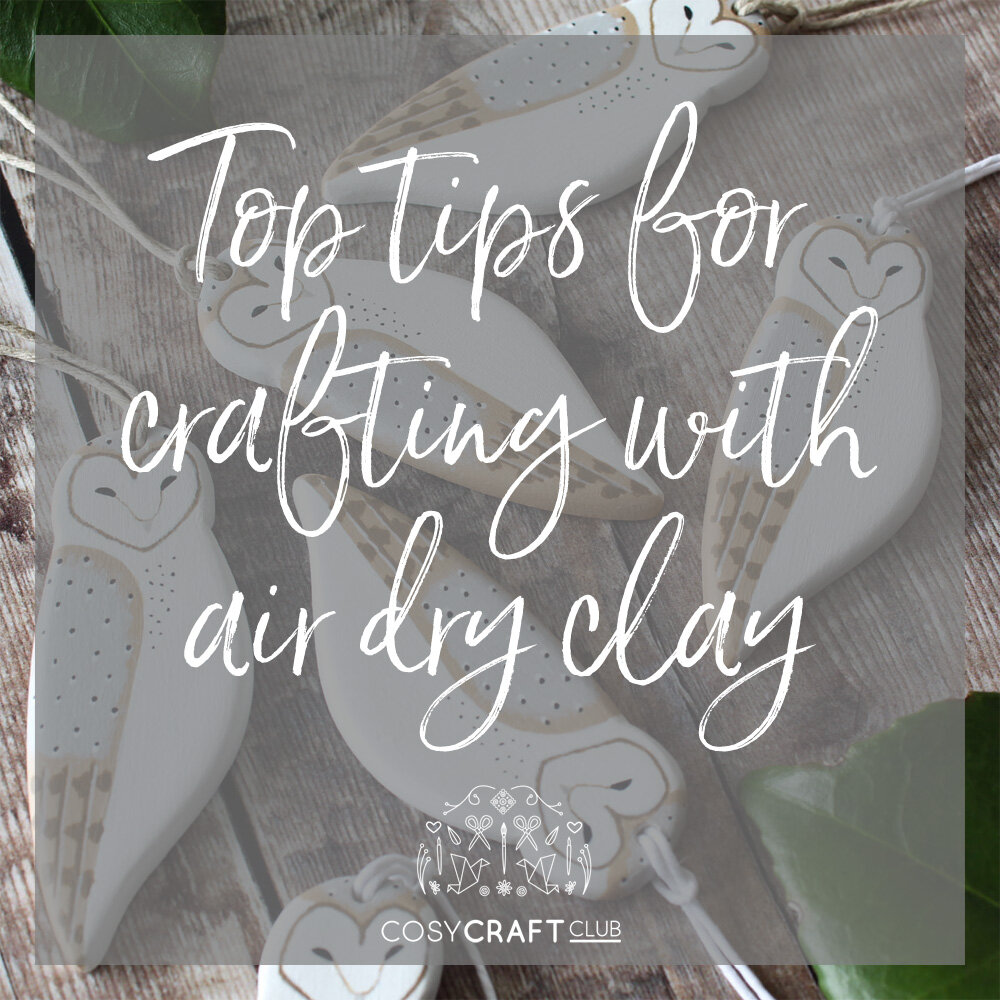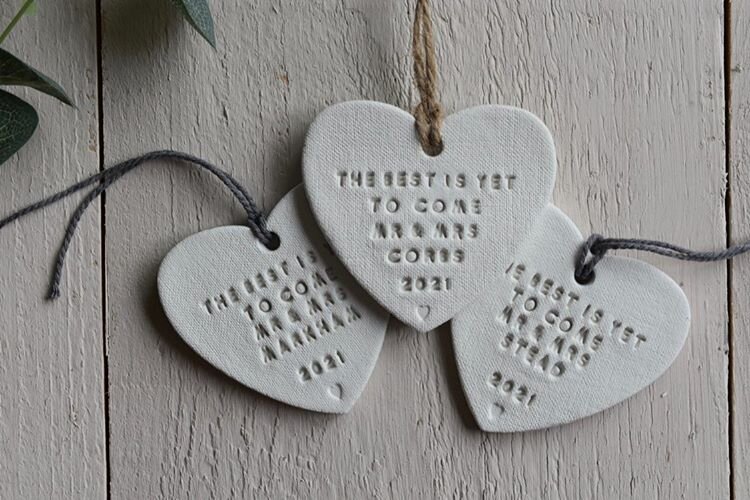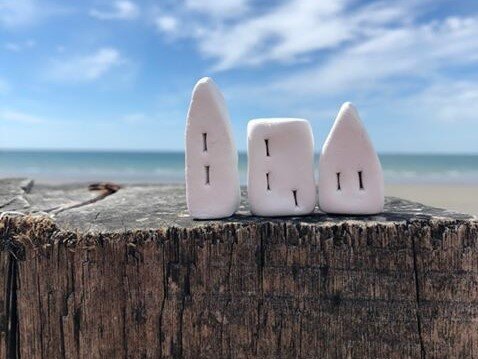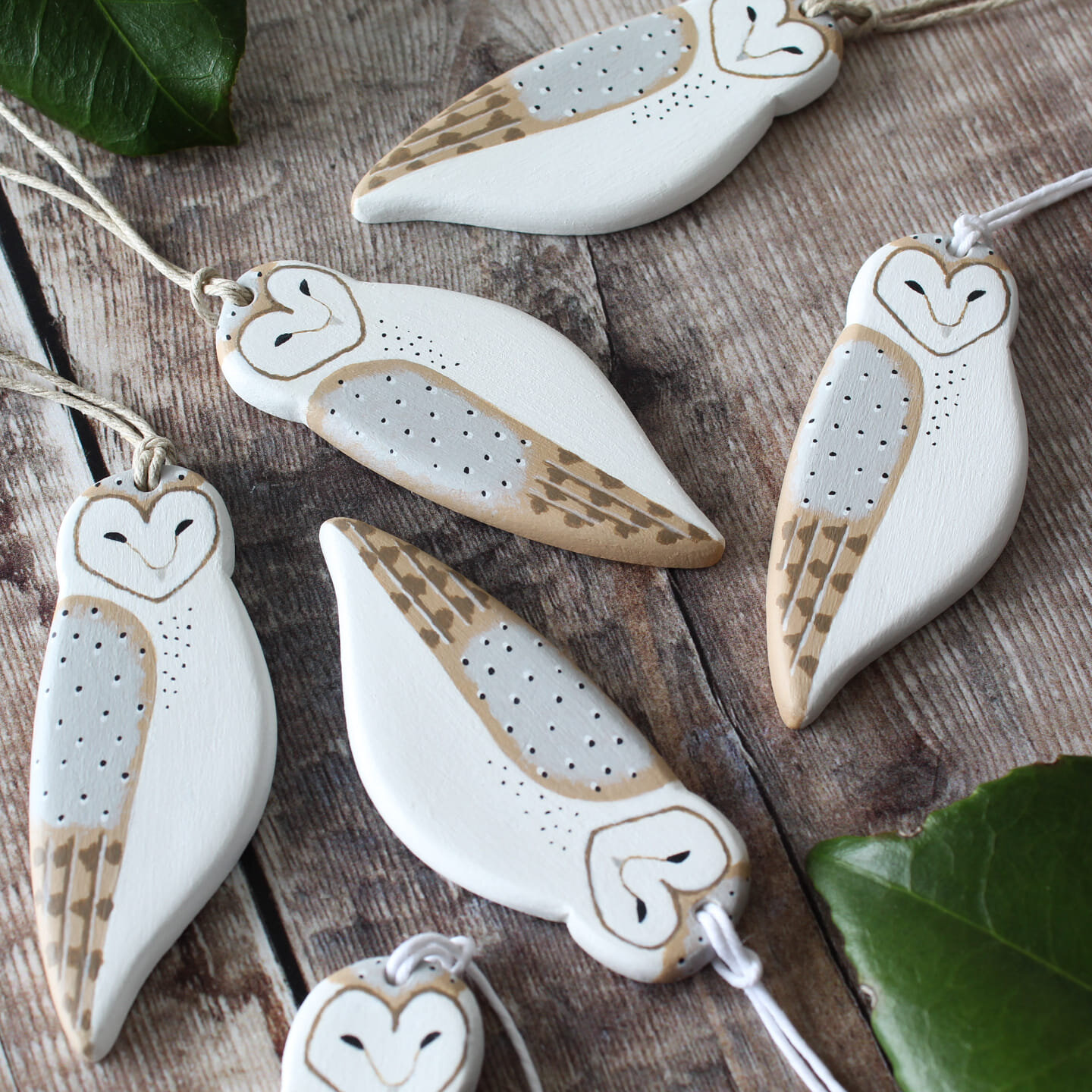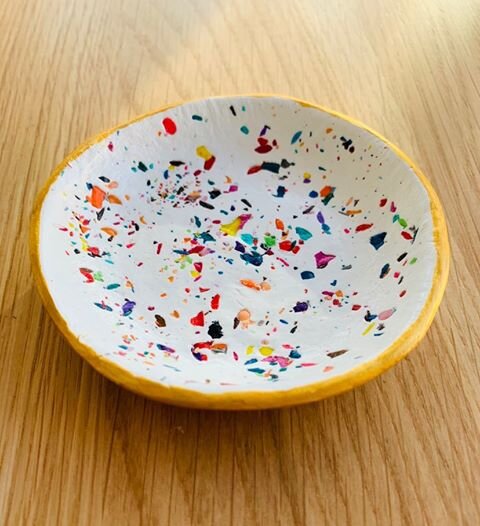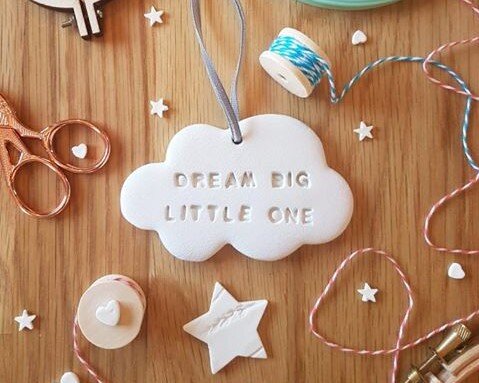Top tips for crafting with air dry clay
Welcome to the Cosy Craft Club's air dry clay month! We really want to encourage you to have a go at working with clay, it’s so fun! You can find all our air dry clay posts in one place here.
Clay is such a wonderfully tactile craft, and using air dry clay is a great way to get started since you don’t need a kiln! But it can be tricky to work with when you’re starting out. We asked lovely UK air dry clay crafters for their top tips for beginners, and we got so many great tips! Keep reading to get loads of great insights to help you with your clay creations.
Leave your clay to dry in the airing cupboard to speed up drying time. I turn the clay pieces over a few times - this allows it to allow it to dry evenly and prevents the sides from curling.
A great way to sand your pieces is with a fine grit nail file, I find this much easier than sandpaper. When I started first playing around with clay I found a pack of old nail files and used them to see how they worked with clay and I’ve never looked back!
Vicki - Bella & Bie @bella_and_bie
Photo: Bella & Bie
Sketch out your ideas before hand, even to the smallest details, as air dry clay tends to dry fast! Or at least have a very clear picture in your head of what your trying to achieve.
Don’t panic if you’ve struggled with an idea or design and you still have rough edges or lumps and bumps. Grab some small pieces of sandpaper. Start with rough to quickly remove anything unwanted and then finish off with smooth to give a soft finish!
Photo: Black Star Clay Designs
Don't be afraid to experiment with texture - everything around us in the home or nature leaves a mark and can lead to a new idea. Whether it’s leaves from the garden, sole of a shoe or a manhole cover there is texture all around us to be captured.
Sam - Dinky Houses @dinky_houses
Photo: Dinky Houses
You don't need to spend a fortune on ALL the tools, you end up mostly using your hands and maybe 2 or 3 tools tops. For making little miniatures I mostly use my hands, a round wooden tool to shape the clay (a pencil would work just as well), a needle tool for detailing and texture, and finally an old paint brush for wetting and and smoothing out any rough bits.
Becky - Falling Fauna @fallingfauna
Photo: Falling Fauna
Great tools that I love to use when working with clay are cookie cutters for shapes and different fabrics to give texture to my creations.
Desiree - Handmade by Dessi @handmadebydessi
Photo: Handmade by Dessi
If you don’t have tools or are just beginning and don’t want to invest in them, don’t worry just use things you find round your house! I use a kitchen knife, metal ruler, measuring spoon to make my pots - not a clay tool in sight.
Air dry clay dries when it is left out but did you know you can oven dry it if you are in a rush? Make sure it is under 100 degrees C and I always take it out and turn it every 10 minutes.
Lindsay - Homemade with Lindsay @homemadewithlindsay
Photo: Homemade with Lindsay
My top tip is to use hand cream before handling the clay as this stops it sticking to your hands. I also use a bit of hand cream to rub on dishes before I push the clay into them instead of cling film.
Photo: Mama Makes It Crafty
When applying paint, do your first base layer and then when applying the second layer keep the brush really dry. This gives a great effect and picks up all of the textures of the clay. You can then keep adding layers to highlight different areas in various colours.
Make sure you don't apply the varnish layer too thick and if you do two coats ensure that you leave it a good few days between them as otherwise it can take a long time to fully dry.
Megan - Megan Edwards Art @meganedwardsart
Photo: Megan Edwards Art
When starting out with air dry clay it can be frustrating as it is so easy to mark the clay unintentionally. But you don’t need to worry about having perfectly smooth clay every time. If I get some small cracks or marks on the clay I just put a bit of water on my fingertip and gently smooth over the areas I’m not happy with. This can save you a lot of time so you don’t have to roll out the clay and start again. If there is still some unevenness after the clay has dried you can always use sandpaper for a nice smooth finish.
Carina - Minimal by Mimi @minimalbymimi
Photo: Minimal by Mimi
Definitely do your research. Some clays are best for delicate and intricate works and others are more suited to less complex designs. I have found through trial and error with making animal figurines, it’s best to add a wire armature to any limbs or areas which would need any extra hold. This adds security and makes it earlier to attach clay to clay!
Keeping the clay wet also allows layer building. However too much water can cause your project to slip and slide. I find it best to have a little spray bottle at hand to ensure an even distribution and control over how much moisture is added. I also make sure I have a scrap damp piece of cotton cloth to wipe down my hands and tools, this removes any dry crispy clay and stops this being added to my project.
Sophie - Sophs Draws @sophsdraws
Photo: Sophs Draws
Nail files are gold! No matter how much you smooth out your clay when wet, it is always going to have some imperfections once dry. I’ve found that a nail file has just the right amount of grit to erase nail marks and dimples without damaging the finished piece. A tool you're likely to have around the house, and far less abrasive that sandpaper.
Bryony - Speckled Hand @speckledhand
The best advice I can give when using air dry clay is practice. My first attempts at using this material were disheartening, my items cracked and had a texture I wasn't happy with. The most important thing is so have fun - you can always smush it all together if you don't like it and start again!
Make sure you have pushed all the air out of the clay whilst you mould it. It might sound silly but I smack it with the palm of my hand until it's fairly even before rolling the clay out, this way you force out any air bubbles.
Alice - Twinkle and Twine @twinkle_and_twine
Photo: Twinkle & Twine
So many amazing tips there! I hope you learned something useful and have been inspired to have a go with air dry clay!
Thank you so much to everyone who contributed to this post. Please click on their links and show them some love :)
Rachel x
Cosy Craft Club is a craft box subscription - receive a beautiful kit to try a different craft every month! All our kits are suitable for beginners and contain everything you need to sit down and get crafting. Our kits are also available to purchase individually (subject to availability).

